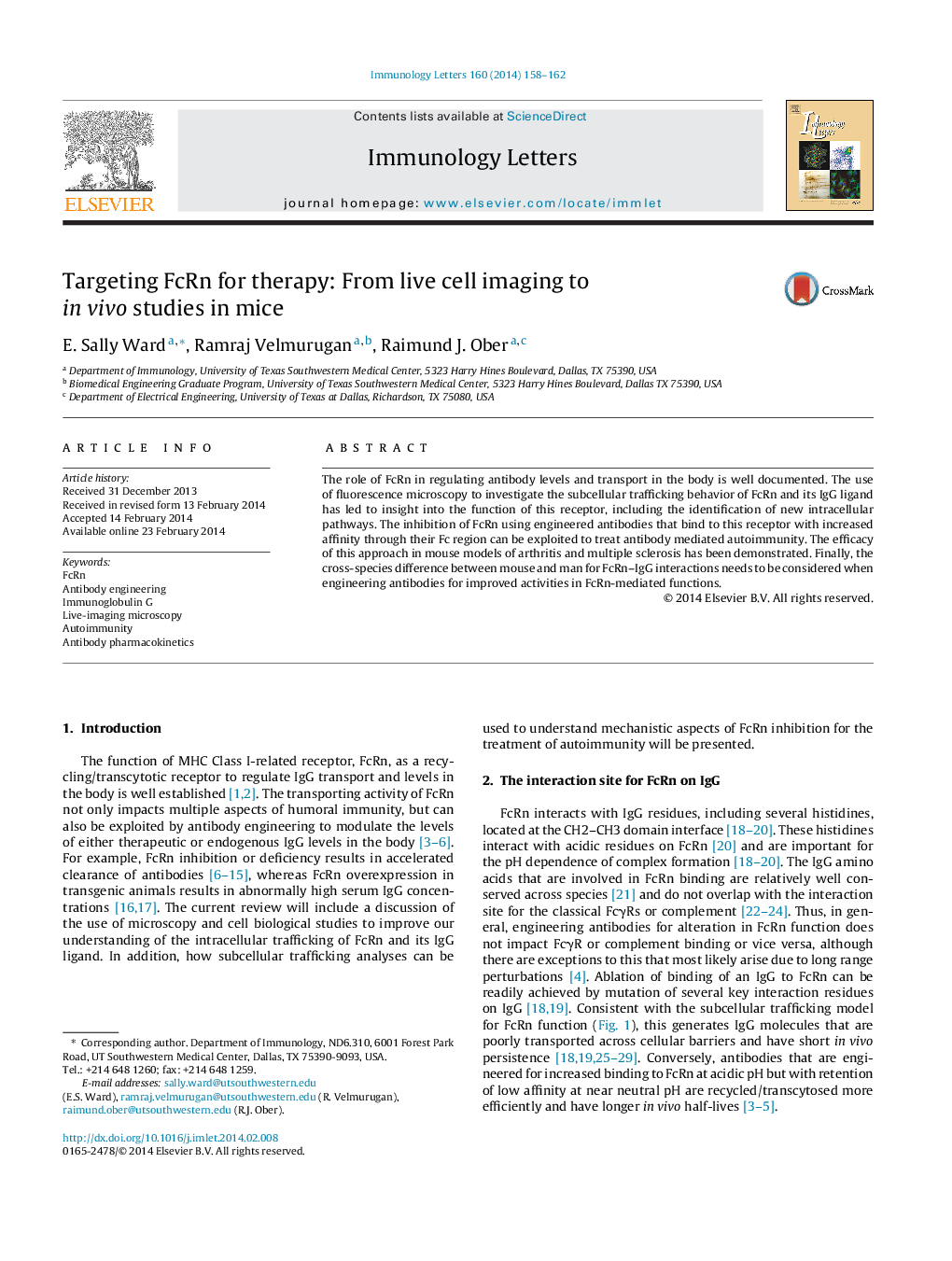| Article ID | Journal | Published Year | Pages | File Type |
|---|---|---|---|---|
| 3355431 | Immunology Letters | 2014 | 5 Pages |
•Microscopy studies have led to the identification of novel trafficking pathways for FcRn.•FcRn inhibitors can be used to treat antibody-mediated autoimmunity.•The pH dependence of FcRn-IgG binding complicates engineering for altered FcRn-mediated activity.
The role of FcRn in regulating antibody levels and transport in the body is well documented. The use of fluorescence microscopy to investigate the subcellular trafficking behavior of FcRn and its IgG ligand has led to insight into the function of this receptor, including the identification of new intracellular pathways. The inhibition of FcRn using engineered antibodies that bind to this receptor with increased affinity through their Fc region can be exploited to treat antibody mediated autoimmunity. The efficacy of this approach in mouse models of arthritis and multiple sclerosis has been demonstrated. Finally, the cross-species difference between mouse and man for FcRn–IgG interactions needs to be considered when engineering antibodies for improved activities in FcRn-mediated functions.
